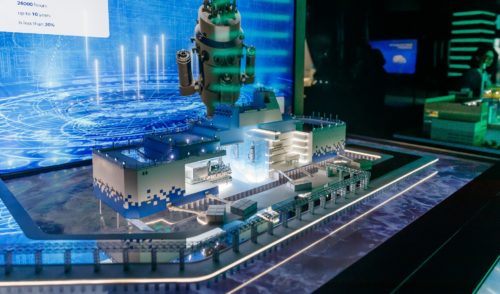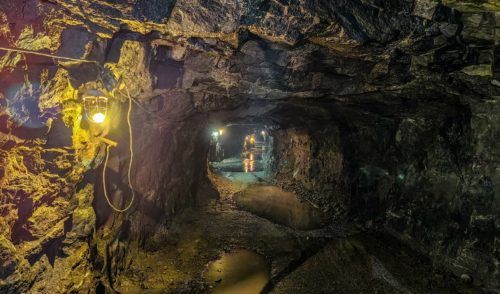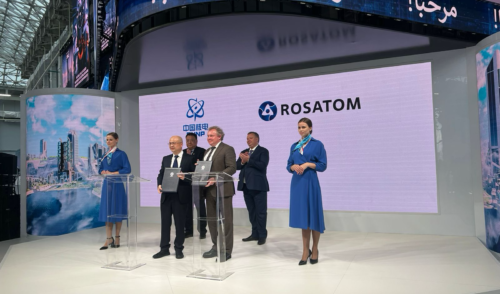
License Issued for Unit 4
back to contentsThe Board of the Egyptian Nuclear and Radiological Regulatory Authority (ENRRA) made a decision to issue a construction license for El Dabaa Unit 4 at a meeting held on August 30. This marks a significant milestone in the project.
This summer, the ENRRA commission conducted a comprehensive on-site inspection and found it would be safe to continue with the construction of Unit 4.
Alexey Kononenko, Vice President of ASE (part of Rosatom) and Director of El Dabaa Construction Project, stressed the construction of the nuclear power plant progressed on schedule. “Obtaining a construction license for Unit 4 is another key milestone we have achieved this year thanks to the well-coordinated work of both the customer (NPPA) and the general contractor (ASE). This is a meaningful step on our way towards the key event, the first concrete pouring and the start of construction works at the fourth unit of Egypt’s first nuclear power plant. I congratulate our close-knit international team on this achievement!” Alexey Kononenko said.
Chairman of the ENRRA Board of Directors Sami Shaaban noted that ENRRA would continue to monitor the activities of the Nuclear Power Plants Authority (NPPA) of Egypt and their compliance with the permits granted, supervise the construction and equipment production processes, and conduct necessary inspections.
Rosatom is building in Egypt a nuclear power plant with four VVER-1200 reactors, each having a capacity of 1,200 MW. In August, the winners of the 6th Atoms for Africa online video contest – young people from Egypt, Ghana, Tunisia and Nigeria – had the opportunity to see for themselves how safe and efficient such plants are. The young contestants created videos and published them on social media. An expert committee consisting of nuclear industry and media representatives selected the most interesting videos.
The contestants could learn more about Russia’s nuclear infrastructure. They visited the Grand Layout of Russia museum in which they were shown models of the latest nuclear icebreaker Arktika, Generation III+ reactor units, and a VVER-1200 nuclear reactor known for its operational safety.
In addition, the students visited the Leningrad NPP, Russia’s largest nuclear power plant located in the town of Sosnovy Bor. The plant operates power units with different-type reactors, including VVER-1200. The guests from Africa learned about the achievements of the Russian nuclear industry, visited the turbine hall of a VVER-1200 power unit, and familiarized themselves with the operating principles of reactors and turbines. The young people from Africa had the opportunity to experience the role of nuclear plant employees by getting trained on the simulators.
“As someone with a scientific background, I had a general idea of the nuclear industry. But to see a real plant was something I could only dream of. We now have a nuclear power plant under construction in Egypt, and when visiting the Leningrad NPP, I felt like I was in the future. I saw what we are yet to have. It is amazing and interesting for me,” Mohamed Mostafa Mahmoud Omran, a student from Egypt, shared his impressions.
Alexander Belyaev, Chief Engineer at Leningrad II, stressed the importance of the African young generation showing interest in Russian nuclear technologies. “The students’ visit could potentially mark the start of their careers in nuclear energy, and the African countries will have broad prospects on their way to energy independence,” Alexander Belyaev said.
AtomStroyExport (ASE) is Rosatom’s engineering division and a global leader constructing most of the nuclear power plants abroad and having the world’s largest portfolio of nuclear construction contracts. The division is active in Europe, Middle East, North Africa, and Asia Pacific.




